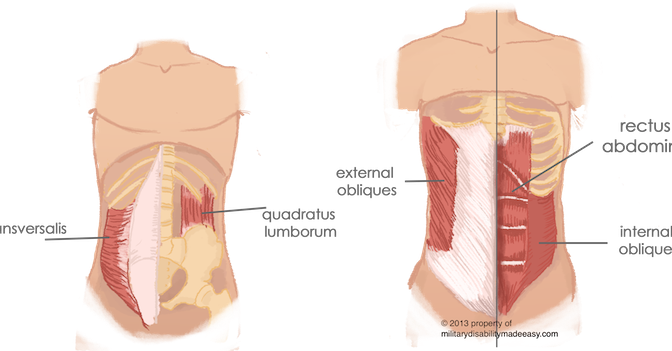A lot of people are missing the mark when it comes to training their abs. The gyms are flooded with people doing sit ups, crunches, Russian twists, and tons of other exercises that placed the spine in a bad position. Hopefully though you have never seen anything like this.
Anyways, core training continues to be a hot topic in the fitness world. The abdominals play a huge role in daily activities and sporting performance. They transfer forces between the extremities of the body so you can accomplish a specific task. And they also help stabilize the spine.
Those are the two biggest roles of the abdominal muscles. So, they need to be trained in way that does either of those two things. Traditional exercises for the core do not do either.
So let’s look at some real world examples of how your abdominals function!
Let’s look at a baseball pitcher. First, they have to apply force into the ground. That force is then transferred through their trunk and into their arm which allows them to throw the ball. This transfer of force is very important.
Think about being suspended from the ceiling and then throwing the baseball. Do you think you would be able to throw it as far in this position as opposed to being on the ground? Nope! This is because you are not able to transfer ground forces through your trunk and into the arm.
As I mentioned above, a second role of the abdominals is to stabilize the spine. This a reflexive mechanism. When you pick up a heavy object off the floor, your abdominals should automatically turn on to prevent your spine from collapsing. This serves to protect you from injury.
Common core exercises place your spine in flexed position continuously, which is not good. Dr. Stuart McGill, one of the leading researchers on low back health, has found that this is one of the main causes of herniated discs over time (1).
If we are constantly flexing our spine, the front of our discs are placed under a large amount of compressive force. If this is continued, injury can arise. We need to train our abs for the function they were created for.
Here are three great exercises to do just that.
The thing I love about this exercise is that it is ground based. The ground provides great feedback as to whether you are doing it correctly or not. You upper back should be flat on the ground, with your low back slightly arched to accommodate the natural lordodic curve of the lumbar spine. This is a neutral spinal alignment.
Pull the band down first to engage your abs. Then you will begin to extend your legs in an alternating fashion. Doing this makes it harder to keep that neutral spine position. That is the point of the exercise. It is trying to throw you out of alignment as you fight to maintain it (stabilization).
2) Side Bridge
This exercise is very beneficial for the quadrates lumborum, obliques, and rectus abdominus. The first two muscles are often weak because they are usually untrained. Strengthening them provides for adequate stability in the frontal plane of motion. This plane is generally disregarded for more saggital plane-dominant movement.
Begin with the elbow placed directly under the shoulder. After this, lift the hips off the ground. The ears should be in line with the shoulders, which should be in line with the hips, which should be in line with the knees. If you do this correctly, your body will be in a diagonal line. The main thing you are trying to do here is prevent the hips from dropping.
3) Pallof Press
This exercise occurs in the transverse (rotational) plane of movement. Just like the frontal plane, it is often disregarded. This movement is wonderful for the obliques. The obliques are very important because they create and control rotation through the trunk (2). The inability to do this can predispose you to injury.
The set up is simple. Set your feet about shoulder width apart. Grab a band or a cable with both hands and pull it to your chest. Once in this position, you will press out until your arms are straight. When you do this, you will feel the resistance trying to rotate your torso. Resist against that. You will definitely feel your obliques working in way you never have before.
WRAPPING UP
You will notice all of these exercises are trying to do one thing: place your spine in a bad position. You will have to fight to maintain that neutral spine position. Doing so, will greatly enhance your ability to stabilize your spine. These exercises will also strengthen your abs, improving their capability of transferring forces throughout your body.
It’s time to think about core training in a different light. Exercises being done today set you up poorly for the future. The exercises I have shown you will not only make you feel great, but they could spare your body from low back injury down the road.
Give them a try!
If you are looking for a personal trainer in Savannah, contact me to set up a consultation.
And if you found any of this information helpful, or know of someone it could help please share with others!
References
1) McGill, S. Designing Back Exercise: From Rehabilitation to Enhancing Performance.http://www.backfitpro.com/pdf/selecting_back_exercises.pdf
2) Nickelston, P. The Internal Obliques and Central Zone Core Stabilization. Dynamic Chiropractic. Strategies for the Successful Practice, (32)4.









1 Comment
[…] If the lumbar spine can’t maintain stability, pain and injury can result. So don’t think about doing exercises like oblique sit-ups, Russian twists, or bicycle kicks. Instead try to incorporate things like the pallof presses and half-kneeling cable chops. Both of these exercises are trying to make you rotate but you will have to resist. That in essence is the true function of the abdominals. […]